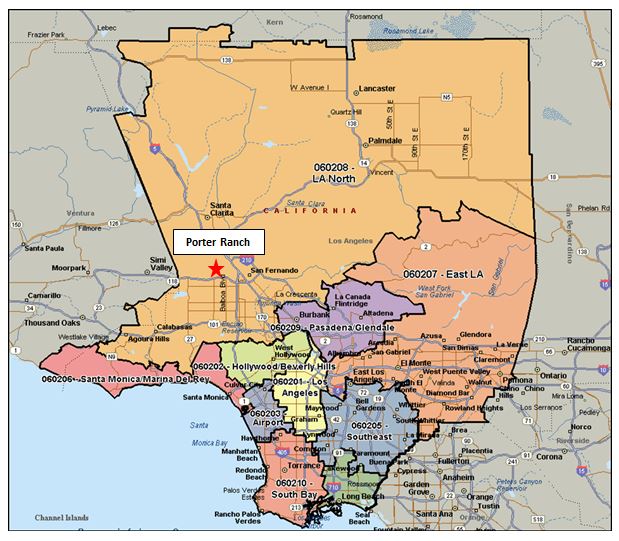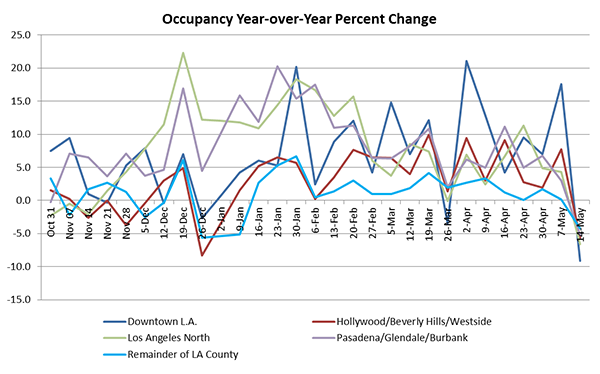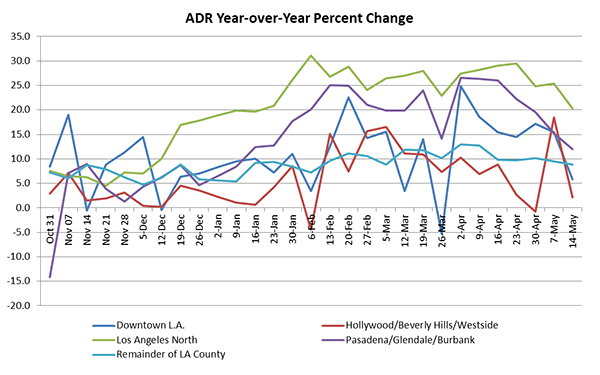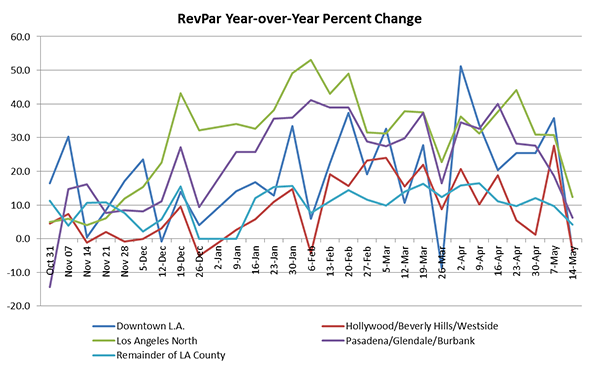By Jenny Lee
Two unusual events have occurred recently that have had a positive impact on the LA hotel industry: the Porter Ranch Gas Leak and the new Harry Potter world at Universal Studios. These events are of the same magnitude as hosting a Democratic or Republican national convention, and should be taken into account when using 2016 data in forecasts, particularly for the San Fernando and adjacent communities.
The discussion of the Porter Ranch effect is the first of a two-part article and next month we will release new research to discuss the Harry Potter effect.
The Porter Ranch Gas Leak
A gas well leak at the Aliso Canyon Storage facility in the upscale San Fernando Valley community of Porter Ranch displaced nearly 8,000 households causing many residents to move to temporary housing. The leak lasted for 112 days before being permanently sealed on February 18, 2016. Shortly after the October rupture, area residents began to complain of elevated asthma symptoms, dizziness, headaches, nose bleeds, and sick pets. After the initial denials, the Southern California Gas Company, a subsidiary of Sempra Energy, agreed to pay for temporary housing, starting in mid-November when the Los Angeles County Department of Health ordered SoCal Gas to pay for new housing for anyone affected by the gas odors.
The program, which started on November 20, 2016 was initially to end on February 25, 2016, but was extended multiple times after legal actions. The last day that residents were to be reimbursed for housing was May 31, 2016. The Los Angeles Tourism & Convention Board has commissioned a study to determine the effect, but the ultimate answer may not be known. Some 4,000 families were covered by court orders, but many other families may be pursuing their own insurance companies.
The following map details the locations of the sub-markets within Los Angeles County in relation to Porter Ranch:

Responding to the county order, SoCal Gas paid up to $250 per day for hotel stays or short term home rentals. Many of the hotels in the most logical evacuation zones had ADRs well below $250, so the effect is not just on occupancy, but on ADR. Some families were placed in hotels and rental homes by relocation companies working through direct billings to SoCal Gas but other residents chose their own hotels or rental homes without benefit of a volume discount.
SoCal Gas had stated in court documents that it had spent about $2 million a day on hotels, rentals and meal allowances for displaced residents. SoCal Gas also reported that it had paid more than 29,000 claims totaling more than $58 million to relocated families for food, gasoline and housing.
SEC filings report that as of December 31, 2015, SoCal Gas recorded estimated costs of $330 million related to the leak. Of these amounts, approximately 70 percent is for the temporary relocation program.
Los Angeles Hotel Market Impacts
The Los Angeles County lodging market as a whole, performed better than last year levels (over the Porter Ranch resident displacement period) by as much as over 20 percentage points in occupancy for the neighboring markets. RevPar was noticeably up for the neighboring submarkets by as much as 50% over prior year levels.
The gas leak had the greatest impact in Los Angeles North, followed by Pasadena/Glendale/Burbank area, and then, most likely because of its status as an employment center, Downtown LA. To a lesser degree, Hollywood and West Hollywood were also impacted. Some of the improvement in the Downtown LA market may be due to compression of short term corporate travel, but also to the 30% increase in Citywide Conventions booked for 2016.
After studying the individual submarkets, we combined the five least-affected areas to use as a base line: East LA, Long Beach, South Bay, Southeast and Airport, and Santa Monica/Marina Del Rey. It appears that the effect was to drive Occupancy up by 2.2 to 8.8 percentage points, depending on the market during the last week of November to first week of May (as most people were back in their homes by early May). With the ADR effect, it drove RevPAR up with the greatest impacts of 24.5% for North Los Angeles market, 17.0% for Pasadena/Glendale/Burbank market, and 9.2% for Downtown LA, when compared to its baseline.
The following tables illustrate how the lodging sub-markets were affected by the gas leak:



This effect continues past the May 31 cut-off date because of the next boon to Valley hoteliers, the opening of Universal Studios’ Harry Potter attraction, which will be further discussed in next month’s article.

